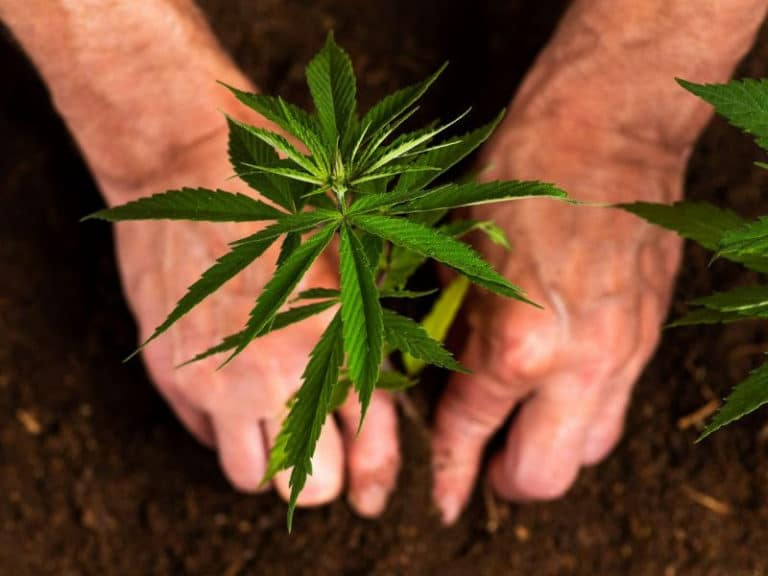by Lukian Kobzeff
With the passage of Prop 64 representing a significant shift in cultural views and regulatory priorities, the State of California now has the perfect incubator industry to produce a significant shift in environmental protection.
Through careful choice architecture, a term coined by behavioral economist Richard Thaler and legal professor Cass Sunstein, California can develop a robust environmental regulatory scheme which accomplishes two overarching goals: (i) “nudging” actors in the cannabis industry towards reducing carbon emissions and (ii) producing revenue for the State. My modest proposal is such: a cap-and-trade market tied to a secondary auction market with a long-term decreasing cap.
While not an original idea, cap-and-trade has been recognized by Thaler and Sunstein as an appropriate incentive based approach that would fare better than a rigid command-and-control system. The environment is a long suffering victim of the tragedy of commons, which is compounded by a near-total lack of a feedback system. By this I mean, if I engage in polluting behavior today, one, I will not have to financially pay for those harms, and two, there will be no feedback demonstrating just how harmful my polluting behavior is; hence, there is no financial cost to my behavior and no demonstrative aspect to discourage my behavior.
A cap-and-trade system would reduce the tragedy of commons caused-harm on the environment. Further, by starting this system small applied to only a single industry, the State could tweak and flex it until the pricing and incentives were correct, and then expand it across multiple industries (as opposed to the problem Washington is facing). Additionally, because the cannabis industry is only just now coming under regulation, adding a cap-and-trade regulation would not be a shock to the industry.
A cap-and-trade system simultaneously creates a disincentive to pollute and creates an incentive to reduce environmentally harmful behavior, while rewarding technological advancement and development, without the resentment of a rigid command-and-control system.
Because Prop 64 and MCRSA both utilize near identical license classification systems, the cap-and-trade system would be specific to each license class, rather than an across the board system, which would inherently favor certain classes. Perhaps the most important component of a regulatory system is correctly pricing the incentive. What is a fair “cap” that properly nudges actors towards environmentally beneficial behaviors? That is the crux of the incentive based approach. The beauty here is because it would only be applied to a single industry, the feedback loop is specific, rapid, and allows for the State to more easily “tinker” with the pricing of the incentive.
My proposed starting point is this: take for instance, the class 4 indoor cultivation license, which allows for up to a 22,000 square feet of cultivation. Assign an equitable carbon emissions amount to that type of grow, based upon data available and reasonable estimate, scaled up to allow for fairness to the cultivators. That number, say x-integer, will be the ceiling or “cap,” the maximum amount of carbon emissions any indoor class 4 cultivator can emit per annual year. Typically, in a standard cap-and-trade system, each actor could “freely” emit up to the x-integer, and then would either be heavily taxed above that x-integer or could purchase carbon emission certificates from the auction market (more on that below).
My suggestion, as an additional nudge, is that the State allows actors to “freely” emit up to 90% of the x-integer, which would be a tax-cap, and the final 10% be taxed at a reasonable rate, a built-in additional incentive to immediately reduce carbon emissions. Anything above the x-integer would be fined at heavy cost, the point being to force actors to stop emissions outright or purchase additional emission “rights” from the auction market.
The second component is the auction market. That is, a digital, open market where actors can sell their unused carbon emission “rights” (or certificates demonstrating that right) to actors that require additional carbon emission certificates (i.e., need to emit more than the x-integer cap). First, this provides a direct, financial benefit to actors that reduce their carbon emissions because they can receive cash for their unused carbon emissions, and second, allows actors to continue their operations at-will, but forces the “heavy” polluters to pay to pollute, thus directly causing them economic “harm” for their environmentally harmful behavior.
The State can also sell a certain number of carbon emission certificates on the auction market, thereby receiving revenue from actors that need to/desire to commit to environmentally harmful behavior (i.e., emit above the x-integer cap).
The tweaking of the incentive price can come from the auction market. After, say two years of the x-integer cap, the State can use the data generated from the auction market, such as strike prices for buy/sell points of certificates, volumes at each strike price, and so forth, to identify the equilibrium or correct incentive price, as determined by the marketplace. This new y-integer, would be the new ceiling, and would provide the starting point for the final two nudges—the marginal ladder decrease of the cap and tax cap.
Every two to four years, the State can reduce the y-integer cap by some marginal percentage point and simultaneously reduce the tax-cap by a similar percentage point. Thus, the y-integer would be reduced 3%, and actors would be taxed after using 85% of the y-cap. In this manner, actors would continually be incentivized to reduce carbon emissions, increase technological advances, and disincentivized to engage in environmentally harmful behavior. With respect to the cannabis industry, the environment would no longer be a victim of the tragedy of the commons—each actor either reduces its harmful behavior or financially pays for its harmful behavior.
Once established as a successful incentive-based approach to protecting the environment in the small incubator of the cannabis industry, the State then could more easily apply it to larger, broader industries. California and the cannabis industry can be the pioneers of a significant, positive shift in environmental protection and regulation.
About the Author
 Lukian Kobzeff attended Pepperdine University School of Law, graduating with honors in 2013. It was at Pepperdine that he crossed paths with Mr. Stanton and Mr. Welsh, starting a friendship that would eventually lead to him joining Frontera Law Group. Prior to attending law school, Lukian worked for nearly two years in Shenzhen, China, as a Logistics Manager for a European manufacturing group, Eurotack Ltd. Lukian attended Linfield College, a private school nestled in the middle of Oregon’s famous vineyards and wineries. He graduated with honors, having completed a Bachelor of Science in Finance with a minor in Economics. Lukian started his legal career in Nevada, as a litigation attorney at one of Nevada’s premiere firms; from there he joined a renowned national law firm. He brings his experience in administrative, regulatory, and compliance law to Frontera Law Group.
Lukian Kobzeff attended Pepperdine University School of Law, graduating with honors in 2013. It was at Pepperdine that he crossed paths with Mr. Stanton and Mr. Welsh, starting a friendship that would eventually lead to him joining Frontera Law Group. Prior to attending law school, Lukian worked for nearly two years in Shenzhen, China, as a Logistics Manager for a European manufacturing group, Eurotack Ltd. Lukian attended Linfield College, a private school nestled in the middle of Oregon’s famous vineyards and wineries. He graduated with honors, having completed a Bachelor of Science in Finance with a minor in Economics. Lukian started his legal career in Nevada, as a litigation attorney at one of Nevada’s premiere firms; from there he joined a renowned national law firm. He brings his experience in administrative, regulatory, and compliance law to Frontera Law Group.






